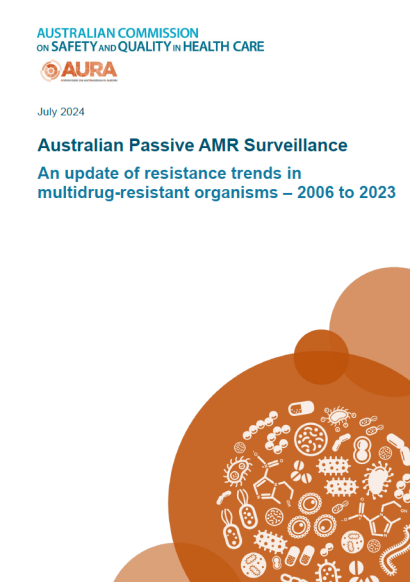Australian Passive AMR Surveillance (APAS)
APAS collects, analyses and reports on de-identified patient-level antimicrobial resistance (AMR) data from routine susceptibility testing results.
Latest APAS Data
The APAS Data Explorer provides an interactive way to view the distribution of antimicrobial resistance (AMR) across Australia. This new dashboard offers dynamic, map-based visualisations of 2023 and 2024 data on:
- Methicillin resistance in Staphylococcus aureus
- Ciprofloxacin resistance in Escherichia coli
- Vancomycin resistance in Enterococcus faecium.
Visit the APAS Data Explorer today to explore the latest AMR trends.
Latest APAS reports
The latest APAS reports were both released in July 2024.
Overview
APAS was established by the Commission in collaboration with Queensland Health in 2015. APAS uses the OrgTRx information technology infrastructure to extract acute and community AMR data from the laboratory information systems of voluntarily contributing pathology services across Australia.
APAS holds more than 124 million susceptibility results, which show geographical and organism-related trends in AMR in Australia. APAS data also inform local antimicrobial stewardship (AMS) and infection prevention and control strategies via antibiograms.
Participants in APAS
| State/Territory | Pathology service | Notes |
|---|---|---|
| New South Wales | NSW Health Pathology | All NSW Health Pathology public laboratory services. |
| Victoria | Alfred Health | Public health service catchment for Alfred Health. |
| Monash Health | Public health service catchment for Monash Health. | |
| Queensland | Mater Pathology Brisbane | Queensland public and private patients. |
| Pathology Queensland | All Queensland Health public hospitals and health services. | |
| South Australia | SA Pathology | Public health catchments for South Australia. |
| Western Australia | PathWest Laboratory Medicine | All Western Australia public hospitals. |
| Tasmania | Launceston General Hospital | Combined data from these two contributing laboratories capture most public patient data for Tasmania, |
| Royal Hobart Hospital | ||
| Australian Capital Territory | ACT Pathology | All public and some private ACT health services. |
Note: Data are available from the Northern Territory for residents who received pathology services interstate.





















